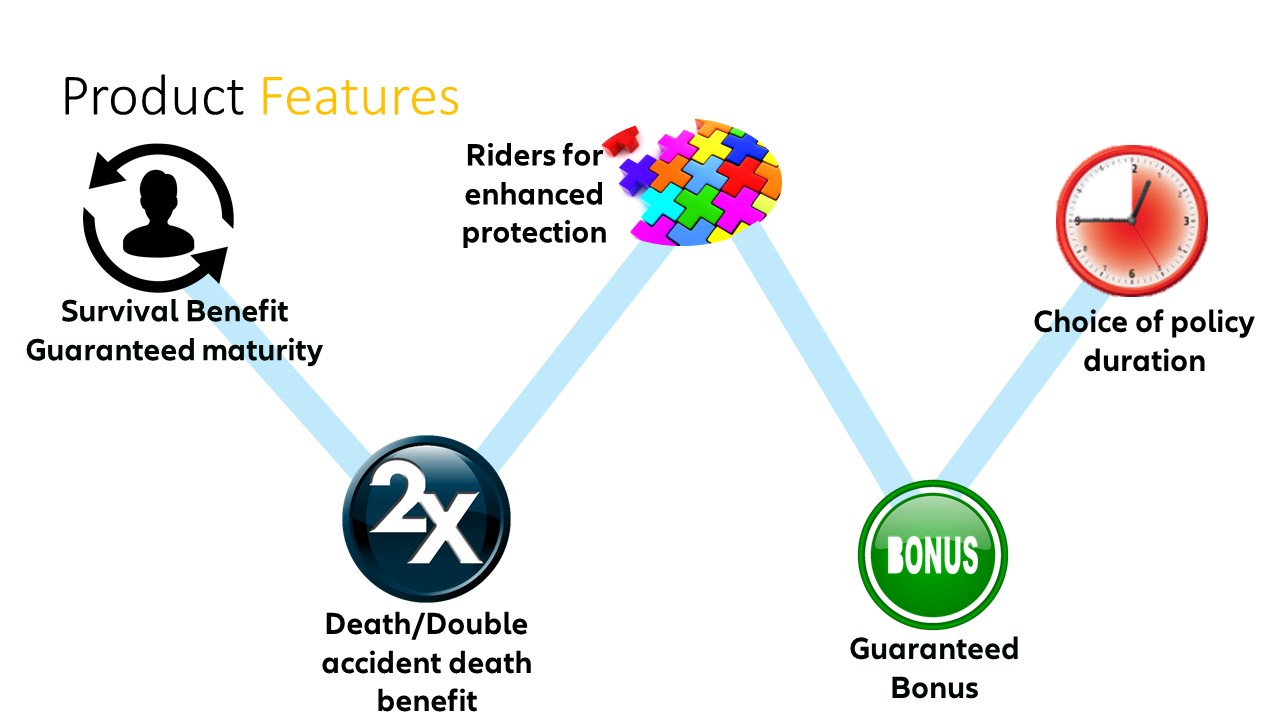

Finance
What Is A Rider On A Life Insurance Policy?
Published: November 17, 2023
Learn about the importance and benefits of adding a rider to your life insurance policy in this comprehensive guide on finance.
(Many of the links in this article redirect to a specific reviewed product. Your purchase of these products through affiliate links helps to generate commission for LiveWell, at no extra cost. Learn more)
Table of Contents
Introduction
Life insurance is a crucial financial tool that helps protect your loved ones financially in the event of your untimely death. It provides a death benefit to your beneficiaries, serving as a financial safety net when they need it the most. However, life insurance policies are not one-size-fits-all. Insurance companies offer various options and add-ons to customize your coverage to better suit your unique needs. One such option is a rider on a life insurance policy.
A rider is an additional provision or benefit that you can include in your life insurance policy to enhance its coverage. It allows you to tailor your policy based on your specific requirements, offering additional protection and flexibility. Riders can provide added benefits and features beyond the standard coverage offered by a basic life insurance policy.
In this article, we will delve deeper into what exactly a rider is on a life insurance policy, explore the various types of riders available, discuss their benefits, and highlight some important considerations before adding a rider to your policy.
Whether you’re purchasing a new life insurance policy or looking to modify an existing one, understanding riders will help you make informed decisions to ensure maximum protection for you and your loved ones.
Definition of a Rider on a Life Insurance Policy
A rider on a life insurance policy is an additional provision or benefit that can be attached to the base policy to modify or expand its coverage. Think of it as an optional add-on that allows policyholders to customize their life insurance coverage according to their specific needs.
Standard life insurance policies provide a death benefit to beneficiaries upon the insured person’s death. However, riders can add extra features and benefits that go beyond the basic coverage. These riders can be purchased at an additional cost or may be included as part of a policy package.
Riders offer policyholders the flexibility to tailor their coverage to better suit their individual circumstances. They can address specific concerns and provide additional financial protection in various scenarios, such as in the case of terminal illness, critical illness, or disability. By adding riders, policyholders can have peace of mind knowing that their loved ones will receive enhanced benefits and financial support when they need it most.
It’s important to note that riders are optional and can be included or removed at the policyholder’s discretion. They can be selected at the time of purchasing a new life insurance policy or added to an existing policy through a policy endorsement or amendment.
Now that we have a clear understanding of what a rider on a life insurance policy is, let’s explore the different types of riders available and the benefits they offer.
Types of Riders
Life insurance riders come in various forms, each designed to address specific needs and concerns of policyholders. Here are some common types of riders that you may consider when customizing your life insurance policy:
- Accidental Death Benefit Rider: This rider provides an additional death benefit if the insured’s death occurs as a result of an accident. It offers an extra layer of financial protection for policyholders who want to safeguard against sudden and unexpected accidents.
- Term Conversion Rider: The term conversion rider allows the policyholder to convert a term life insurance policy into a permanent life insurance policy without undergoing additional medical underwriting. This provides flexibility for individuals who anticipate a change in their long-term insurance needs.
- Waiver of Premium Rider: With the waiver of premium rider, the insurance company waives the premium payments if the insured becomes disabled and unable to work. This ensures the policy remains in force and the death benefit will still be paid out to the beneficiaries even if the insured cannot pay the premiums due to a disability.
- Long-Term Care Rider: This rider provides funding for long-term care expenses in the event the insured requires assistance with activities of daily living or experiences cognitive impairment. The rider can help cover the costs of nursing home care, assisted living, or in-home care.
- Critical Illness Rider: A critical illness rider pays out a lump sum if the insured is diagnosed with a specified critical illness, such as cancer, heart attack, or stroke. The funds can be used to cover medical expenses or supplement income during the recovery process.
These are just a few examples of the many riders available in the market. It’s important to consult with an insurance professional to determine which riders align with your specific needs and financial goals. Consider your lifestyle, family situation, and potential risks when selecting riders to ensure you have the necessary protection in place.
Now that we have explored the different types of riders, let’s dive into the benefits of adding riders to your life insurance policy.
Benefits of Riders
Adding riders to a life insurance policy can provide several benefits and added protection beyond the basic coverage offered by the base policy. Here are some key benefits of including riders:
- Enhanced Coverage: Riders allow you to customize and expand the coverage of your life insurance policy. By adding specific riders, you can address specific concerns and ensure that your policy provides financial protection in various scenarios, such as accidents, disabilities, critical illnesses, or long-term care needs.
- Flexibility: Riders offer flexibility by allowing you to modify your coverage based on your changing needs. You can add or remove riders as your circumstances evolve, providing you with tailored protection throughout different stages of your life.
- Additional Financial Support: Riders can provide additional financial support when you need it most. For example, an accidental death benefit rider can offer an extra death benefit if the insured’s death is due to an accident. A critical illness or long-term care rider can provide a lump sum payment to cover medical expenses or care costs during times of illness or disability.
- Cost-effectiveness: Including riders in your policy can often be more cost-effective than purchasing separate insurance policies. By bundling riders with your base life insurance policy, you may be able to save money compared to buying standalone coverage for specific needs.
- Peace of Mind: The additional benefits and protection provided by riders can offer peace of mind to policyholders and their families. Knowing that you have coverage in place for various scenarios, such as accidents, illnesses, or disabilities, can alleviate financial worries and provide reassurance that your loved ones will be taken care of.
When considering adding riders to your life insurance policy, it’s important to carefully assess your needs and evaluate the cost-effectiveness of each rider. Consult with an insurance professional who can help you understand the potential benefits and drawbacks of various riders and guide you in selecting the ones that align with your specific requirements.
Now that we have explored the benefits of adding riders, let’s discuss some important considerations before incorporating riders into your life insurance policy.
Considerations before Adding a Rider
While riders can enhance the coverage and flexibility of your life insurance policy, it’s important to carefully consider a few key factors before adding them. Here are some important considerations to keep in mind:
- Cost: Riders come at an additional cost, and the premiums for each rider can vary based on the specific terms and coverage provided. Evaluate your budget and ensure that the cost of adding riders aligns with your financial resources.
- Applicability: Assess the relevance of each rider to your specific needs and circumstances. Consider your health, lifestyle, and family situation to determine which riders provide the most value to you and your loved ones.
- Coverage Limits: Understand the limits and restrictions associated with each rider. Read the policy documents carefully to determine any waiting periods, maximum benefit payouts, or specific conditions that may apply.
- Policy Duration: Consider the duration of your life insurance policy. Some riders may only be available for the duration of the base policy term, while others may offer the option to convert or extend the rider beyond the initial policy term.
- Policy Cancellation: If you decide to remove a rider or cancel a policy with riders, be aware of any potential consequences. Assess the impact on your coverage and any potential refund or adjustment of premiums paid for the rider.
Additionally, it’s recommended to review your life insurance needs periodically to ensure that the riders you have selected still align with your current situation. As your circumstances change, you may need to add, modify, or remove riders to ensure your policy continues to provide adequate protection.
Before making any decisions, consult with a licensed insurance professional who can help you assess your needs and guide you in selecting the appropriate riders for your life insurance policy.
Now that we have discussed the considerations surrounding riders, let’s address some common FAQs about life insurance riders.
FAQs about Life Insurance Riders
1. Do I have to pay an additional premium for riders?
Yes, adding riders to your life insurance policy typically requires an additional premium. The cost of the rider varies depending on factors such as the type of rider, the coverage amount, and your age and health.
2. Can I add or remove riders from my policy after it is purchased?
In most cases, you can add or remove riders from your policy even after it has been purchased. However, there may be specific terms and conditions regarding when and how changes to riders can be made. It’s best to consult with your insurance provider or agent to understand the process.
3. Can I have multiple riders on my life insurance policy?
Yes, you can have multiple riders on your life insurance policy, depending on your insurance provider and the specific terms of your policy. Consider your needs and priorities to determine which combination of riders will best suit your financial goals.
4. When do the benefits of a rider become payable?
The benefits of a rider become payable according to the terms outlined in the policy contract. For example, some riders, like an accidental death benefit rider, may provide additional benefits if the insured’s death is the result of an accident. Other riders, such as a critical illness rider, may pay out a lump sum upon the diagnosis of a qualifying illness.
5. Can I add riders to an existing life insurance policy?
Yes, it is often possible to add riders to an existing life insurance policy. This can be done through a policy endorsement or amendment. However, the availability of specific riders and the process for adding them may vary depending on the insurance company and the terms of your policy. It’s important to consult with your insurance provider to understand the options available to you.
Remember, these FAQs serve as general guidance, and the specific terms and conditions of riders may vary depending on your insurance policy and provider. It’s crucial to consult with an insurance professional to receive accurate and personalized information.
Now that we have addressed some common FAQs, let’s wrap up this article.
Conclusion
Understanding and utilizing riders on a life insurance policy can be a valuable tool in customizing your coverage to meet your unique needs. Riders offer the flexibility to enhance the benefits, extend coverage, and provide additional financial protection for specific circumstances.
By adding riders, you can ensure that your life insurance policy not only provides a death benefit but also addresses concerns such as accidental death, disability, critical illness, long-term care, and more. These optional add-ons allow you to tailor your policy to align with your current situation and provide peace of mind for you and your loved ones.
It’s crucial to carefully consider the cost and applicability of each rider before incorporating them into your policy. Evaluate your budget, read the policy terms, and consult with an insurance professional to determine which riders are most suitable for your needs.
Remember to regularly review your life insurance needs as they evolve. Life events such as marriage, the birth of a child, career changes, or health conditions may require adjustments to your coverage. Adding or modifying riders can help ensure that your life insurance policy continues to provide the necessary financial protection for you and your family.
If you are considering adding riders to your life insurance policy, reach out to a qualified insurance professional who can provide expert guidance specific to your situation. They can help you navigate the options, understand the costs and benefits, and make informed decisions to secure the financial well-being of your loved ones.
In summary, life insurance riders offer the opportunity to enhance and customize your coverage, allowing you to address specific concerns and provide added financial security. Take advantage of the flexibility and benefits that riders provide to maximize the value of your life insurance policy.














